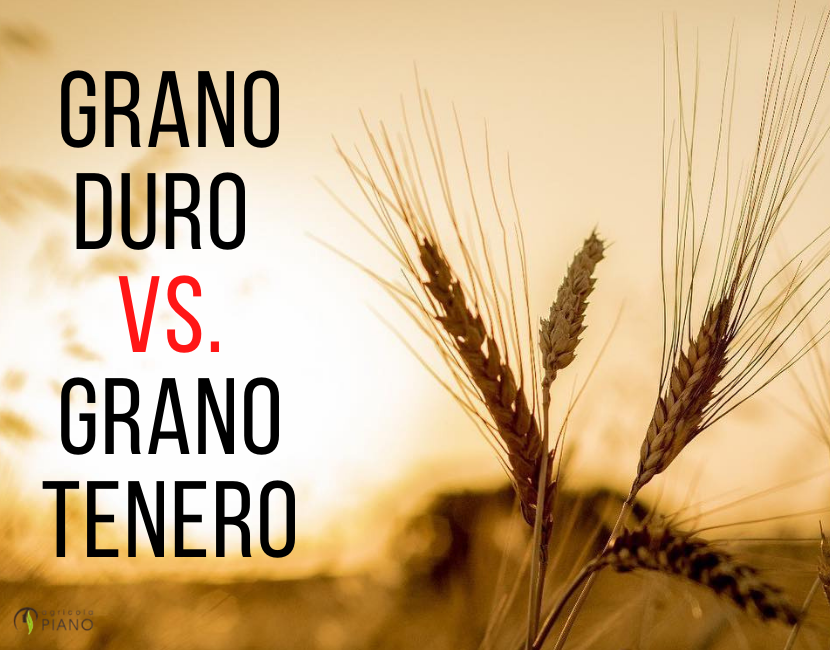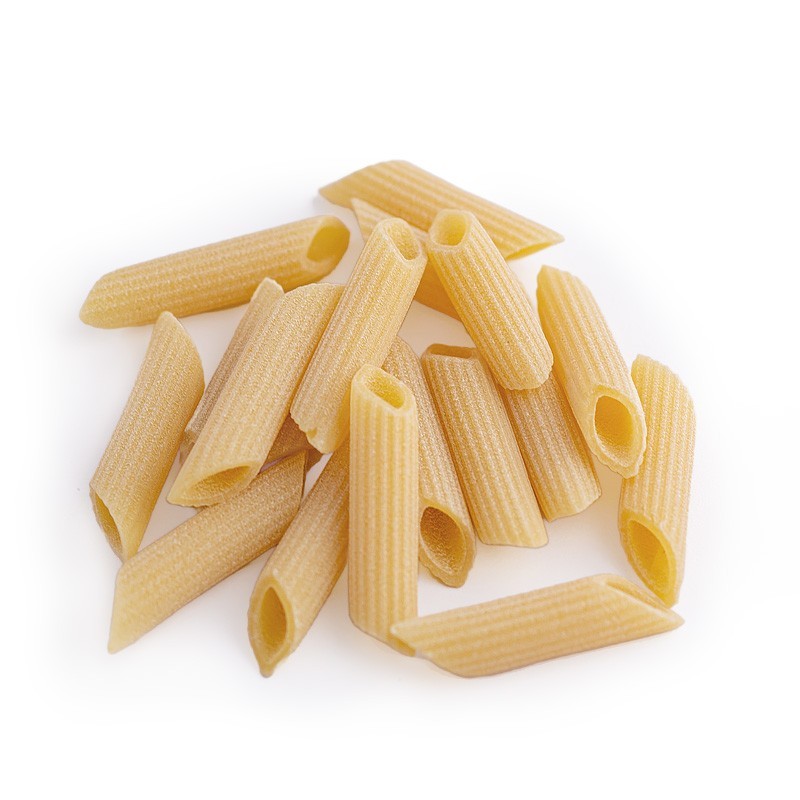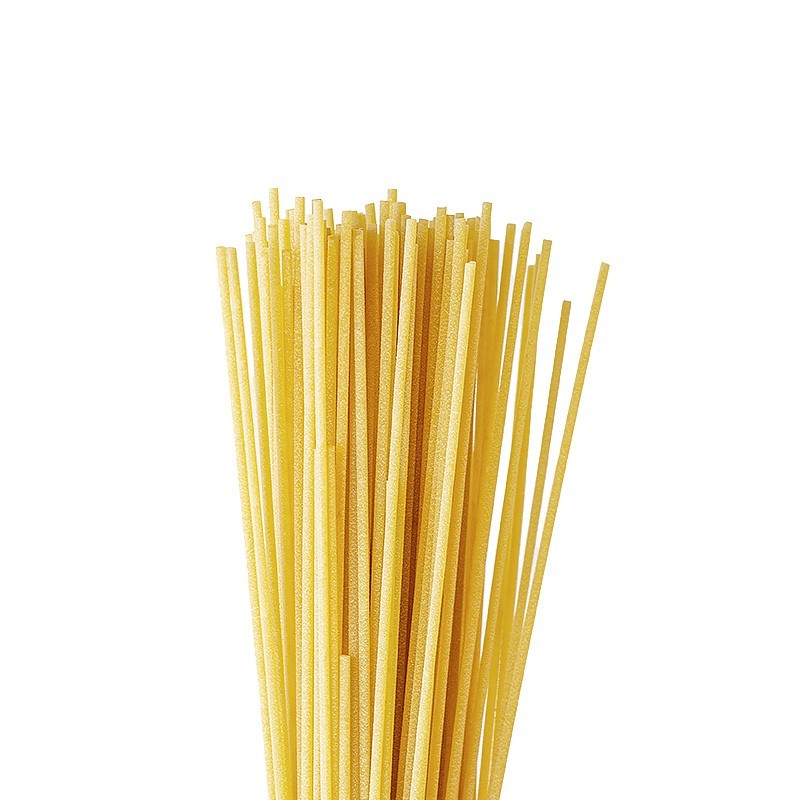04-11-2023

Traits & Benefits: Durum vs. Soft Wheat Difference Understood
Understanding the difference between hard wheat and soft wheat, or more specifically the difference between durum and soft wheat, is essential for anyone interested in cooking and nutrition. Often this distinction is not clear, yet the unique characteristics of each type have a significant impact on the outcome of our recipes.
Soft Wheat: The King of Baked Goods
Unique Characteristics of Soft Wheat Flour
Soft wheat, scientifically known as Triticum aestivum, is an extremely versatile cereal variety and the most widespread globally. It is widely cultivated for its flour, characterized by a very fine granulometry and a soft texture, making it ideal for producing bread, cookies, and various sweets.
The Role of Gluten in Soft Wheat
The main reason why soft wheat flour is perfect for these uses lies in its gluten content, an essential protein that forms an elastic network capable of retaining the gases released during the fermentation of yeast. This process is crucial to give baked goods the softness and volume that is so desired.
Proteins and Texture in Pastry
Furthermore, soft wheat flour generally has a lower protein content compared to hard wheat flour, resulting in less tenacious and more manageable gluten, ideal for creating doughs that require specific softness and friability, as in the case of cookies and pastry.
Sugar and Fat Absorption
Its ability to absorb sugars and fats in a balanced way allows for an even distribution of these ingredients within the dough, ensuring a final result balanced in taste and texture.
Mixing and Flavors
Thanks to its fineness, soft wheat flour blends well with other ingredients, allowing flavors to integrate perfectly and creating an optimal base for enhancing delicate tastes, a crucial aspect in the preparation of sweets and pastry.
The Preferred Choice for Sweets and Cakes
Finally, its relative low strength is an advantage for products that do not require high elasticity, but rather a light texture and an inviting appearance, as in the case of cakes and sweet leavened products. Soft wheat flour thus represents an irreplaceable ingredient in kitchens and bakeries around the world, appreciated for its ability to adapt to a variety of culinary uses, always guaranteeing high-quality results.
Hard Wheat: The Hero of Quality Pasta
Distinctive Features of Hard Wheat
On the contrary, hard wheat, scientifically known as Triticum durum, stands out for its unique characteristics that make it the ideal choice for the production of high-quality pasta. Hard wheat is particularly appreciated for its high protein content, especially its excellent quality gluten, which provides strength and elasticity to the pasta dough.
The High Protein Content and the Quality of the Gluten
The proteins of hard wheat, when worked with water, form a robust and resilient gluten, essential for obtaining pasta that maintains its shape both during the extrusion process and when cooking. This ability to withstand heat treatments without falling apart allows the pasta to remain al dente, a quality highly sought after by both professional cooks and home cooking enthusiasts.
Semolina from Hard Wheat: An Ideal Consistency for Pasta
Different from soft wheat flour, the semolina obtained from hard wheat has a more granular and full-bodied consistency. This structure helps to maintain shapes better during cooking and to a slightly rough surface that allows sauces and condiments to adhere better, enriching each bite with their flavor.
Resilience in Cooking and Shape Retention
The resilience of gluten in durum wheat ensures that pasta does not crumble or become mushy during cooking, a critical aspect for dishes where the texture of the pasta is as important as the sauce. Due to this property, durum wheat semolina pasta is particularly suitable for recipes that require extended cooking times, such as baked dishes or meals prepared in advance.
Conclusion: Durum Wheat as a Pillar of Traditional Pasta
Therefore, durum wheat reaffirms itself as a pillar of culinary tradition, especially in pasta production, due to its intrinsic qualities that translate into a culinary superiority recognized worldwide. Pasta made with durum wheat semolina is a symbol of quality and tradition, maintaining its reputation for excellence in Italian and international cuisine.
Nutritional Aspects: Understanding the Difference Between Durum & Soft Wheat
Nutritional Profile of Durum Wheat and Soft Wheat
From a nutritional standpoint, the two types of wheat present distinct profiles with direct implications for health and diet. Durum wheat, with its higher protein content, offers benefits that extend beyond the simple structure of the pasta.
Protein Contribution of Durum Wheat: Health Benefits
Proteins are essential macronutrients for building and repairing tissues in the human body, and durum wheat is a valuable source of this nutrient. The quality of the proteins in durum wheat, particularly the presence of high-quality gluten, makes it a valuable ingredient in the diet for those looking to maintain or increase muscle mass.
Micronutrients and Minerals in Durum Wheat
Besides proteins, durum wheat is a good source of micronutrients such as iron, zinc, and B-vitamins, especially vitamins B3, B1, and B9 (niacin, thiamine, and folic acid). These nutrients play key roles in supporting metabolic functions and promoting the health of the nervous system and heart.
Dietary Fibers and Impact on Digestion
Although durum wheat and soft wheat have similar amounts of dietary fiber, the quality of fiber in durum wheat can have a positive impact on digestion. Fibers help regulate intestinal transit, can contribute to the prevention of digestive disorders, and are associated with a lower risk of developing chronic diseases such as type 2 diabetes and cardiovascular diseases.
Soft Wheat and Its Nutritional Impact
On the other hand, soft wheat, while having a slightly lower protein content compared to durum wheat, is still an essential source of energy and nutrients, especially through whole wheat flour, which retains a higher amount of fibers and micronutrients compared to refined flour.
Dietary Balance: Including Both Types of Wheat
Incorporating both types of wheat in the diet can contribute to a balanced eating regimen, providing a broad spectrum of essential nutrients. The choice between durum and soft wheat can therefore depend not only on culinary preferences but also on the specific nutritional goals of the individual.
Conclusion: Understanding the Difference Between Durum and Soft Wheat
Understanding the nutritional differences between durum wheat and soft wheat is essential for making informed food choices that positively affect overall health. A diet that includes various types of cereals can ensure a balanced intake of nutrients, supporting a healthy and active lifestyle.
Cultivation and Environment: Adaptability of Durum and Soft Wheat
The cultivation of soft wheat and durum wheat varies significantly depending on pedoclimatic conditions, that is, the combination of soil and climate characteristics. Durum wheat, for example, prefers warm and dry climates, typical of Mediterranean regions, and this has to do with its ability to better tolerate drought compared to soft wheat.
Ideal Climatic Conditions for Durum Wheat
Durum wheat adapts better to climates characterized by mild winters and long, hot, and dry summers. This type of climate is ideal for durum wheat as the risk of fungal diseases is lower and the grain hardens well, acquiring those characteristics that make it perfect for semolina and pasta. The Mediterranean regions, with their arid summers and prolonged exposure to the sun, offer the optimal conditions for the maturation of durum wheat grains.
Pedoclimatic Conditions for Soft Wheat
On the other hand, soft wheat adapts to a wider range of climatic conditions and can grow well even in regions with cooler and more humid summers. It tends to prefer a temperate climate, where precipitation is evenly distributed throughout the year. Soft wheat is less drought-tolerant compared to durum wheat but is more resistant to cold, which makes it cultivable even in regions with harsher winters.
Conclusions on Pedoclimatic Conditions
Understanding the ideal pedoclimatic conditions is crucial for optimizing the production of both soft and durum wheat. Careful management and the selection of varieties suited to local conditions can significantly affect the quality of the crop, as well as its sustainability and resilience to climate change.























